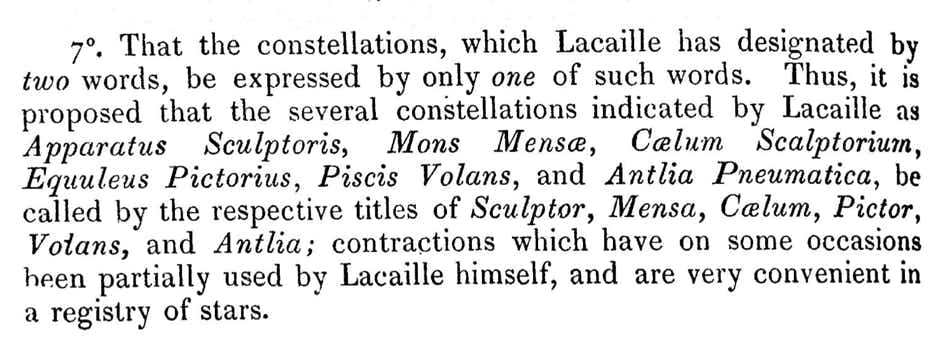
Genitive: Volantis
Abbreviation: Vol
Size ranking: 76th
Origin: The 12 southern constellations of Keyser and de Houtman
One of the 12 new constellations introduced at the end of the 16th century by the Dutch navigators Pieter Dirkszoon Keyser and Frederick de Houtman. Volans represents a real type of fish found in tropical waters that can leap out of the water and glide through the air on wings. Sometimes the fish landed on the decks of ships and were used for food. In the sky the flying fish is imagined being chased by the predatory Dorado, as happens in reality.
The constellation was first depicted in 1598 on a globe by the Dutchman Petrus Plancius under the name Vliegendenvis. Bayer in 1603 called it Piscis Volans, the Latin title by which it became generally known until the mid 19th century. In 1844 the English astronomer John Herschel proposed shortening it to just Volans. Francis Baily adopted this suggestion in his British Association Catalogue of 1845, and it has been known as Volans ever since.
The brightest stars of Volans are of only fourth magnitude, and there are no legends associated with it.
Volans, under its original name Piscis Volans, shown leaping against the side of the ship Argo on Chart XX of the Uranographia of Johann Bode (1801).
© Ian Ridpath. All rights reserved
John Herschel proposed shortening the names of six of Lacaille’s southern constellations from two words to one in a paper published in the Monthly Notices of the Royal Astronomical Society in 1844. His proposal was readily adopted, and we now know these constellations as simply Antlia, Caelum, Mensa, Pictor, Sculptor, and Volans.




